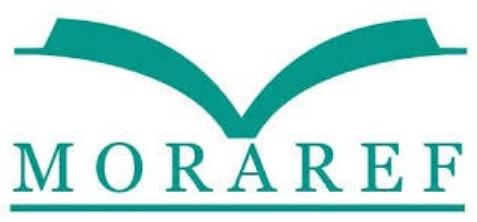Measurement of the Zakat Transparency Index of Amil Zakat Institutions (LAZ) in Banten Province, Indonesia
Abstract
As an institution that manages social funds, transparency must be met for the Amil Zakat Institution. By measuring the zakat transparency index, the Amil Zakat Institution can find out the extent of the implementation of transparency in the organisation. Information disclosure to the public is believed to increase public confidence in paying zakat at the Amil Zakat Institution. This study aims to measure the zakat transparency index of the Amil Zakat Institution in Banten Province. The Simple Additive Weighting (SAW) method is used to calculate the transparency index of zakat institutions. The Simple Additive Weighting (SAW) method is a multiple attribute retrieval method, where the weight of each predetermined dimension is multiplied by each variable weight, then added up. The results showed that the Amil Zakat Institution in Banten Province was included in the reasonably transparent category with an index of 0.706.
Keywords
Full Text:
PDFReferences
Adnan, M. A. (2017). The need of establishment of professional amil zakat to enhance the future zakat development. International Journal of Zakat, 2(1), 71-79.
Amalia, E., Rodoni, A., & Tahliani, H. (2018). Good Governance in Strengthening the Performance of Zakat Institutions in Indonesia. KnE Social Sciences, 223-241.
Antonio, Muhammad Shafi'i (2002). Bank Syariah: dari teori ke praktik. Jakarta: Gema Insani.
Ascarya & Yumanita, D. (2019). Analisis Rendahnya Pengumpulan Zakat Di Indonesia Dan Alternatif Solusinya (No. WP/9/2018).
Asfarina, M., Ascarya, A., & Beik, I. S. (2019). Classical and Contemporary Fiqh Approachesto Re-Estimating The Zakat Potential in Indonesia. Journal of Islamic Monetary Economics and Finance, 5(2), 387-418.
Badan Pusat Statistik. (2019). Diakses pada tanggal 2 April 2020 dari https://www.bps.go.id/subject/23/kemiskinan-dan ketimpangan.
Barth, M. E., & Schipper, K. (2008). Financial reporting transparency. Journal of Accounting, Auditing & Finance, 23(2), 173-190.
Barth, M. E., Konchitchki, Y., & Landsman, W. R. (2013). Cost of capital and earnings transparency. Journal of Accounting and Economics, 55(2-3), 206-224.
Behn, B. K., DeVries, D. D., & Lin, J. (2010). The determinants of transparency in nonprofit organizations: An exploratory study. Advances in Accounting, 26(1), 6-12.
Bushman, R. M., Piotroski, J. D., & Smith, A. J. (2004). What determines corporate transparency?. Journal of accounting research, 42(2), 207-252.
Dubbink, W. (2007). Transparency gained, morality lost: A critique of the administrative conceptualization of CSR, illustrated by Dutch policy. BUSINESS AND SOCIETY REVIEW-BOSTON AND NEW YORK-, 112(2), 287.
Firdaus, M., Beik, I. S., Irawan, T., & Juanda, B. (2012). Economic estimation and determinations of Zakat potential in Indonesia. Jeddah: Islamic Research and Training Institute.
Gambling, T. E., & Karim, R. A. A. (1986). Islam and 'social accounting'. Journal of Business Finance and Accounting, 13(1), 39-50
Haniffa, R. (2002). Social responsibility disclosure: An Islamic perspective. Indonesian Management and Accounting Journal. 1(2)
Huda, N., & Sawarjuwono, T. (2013). Akuntabilitas Pengelolaan Zakat melalui Pendekatan Modifikasi Action Research. Jurnal Akuntansi Multiparadigma, 4(3), 376-388.
Indonesia Zakat Outlook. (2018). Diakses pada tanggal 2 April 2020 dari https://www.puskasbaznas.com/publications/outlook/indonesia-zakat-outlook
Indikator Pemetaan Potensi Zakat. (2019). Diakses pada tanggal 3 April 2020 dari https://www.puskasbaznas.com/publications/outlook/indonesia-zakat-outlook
Lewis, M. K. (2006). Accountability and Islam. Fourth International Conference on Accounting and Finance in Transitions. Adelaide, Australia
Nasri, R., Aeni, N., & Haque, M. G. (2019). DETERMINATION OF PROFESSIONALISM AND TRANSPARENCY AND ITS IMPLICATIONS FOR THE FINANCIAL PERFORMANCE OF ZAKAT INSTITUTIONS. Journal of Islamic Monetary Economics and Finance, 5(4), 785-806.
Nurfadhilah, I. R., & Sasongko, C. (2019, July). Web-Based Accountability in an Islamic Non-Profit Organization: A Case Study of Badan Amil Zakat National in Indonesia. In Asia Pacific Business and Economics Conference (APBEC 2018). Atlantis Press.
Puskas Baznas. (2019a). Dampak Zakat Terhadap Kesejahteraan Mustahik di Pulau Jawa. Diakses pada tanggal 2 April 2020 dari https://www.puskasbaznas.com/publications/ officialnews
Puskas Baznas. (2019b). Indeks Transparansi Organisasi Pengelola Zakat (OPZ). Diakses pada tanggal 5 April 2020 dari https://www.puskasbaznas.com/ publications/ indonesia-zakat-index/indeks-transparansi-opz
Saad, R. A. J., Abdul Aziz, N. M., & Sawandi, N. (2014). Islamic accountability framework in the zakat funds management. Procedia-Social and Behavioral Sciences, 164, 508-515.
Statistik Baznas. (2019). Laporan Keuangan Tahun 2018. Diakses pada tanggal 2 April 2020 dari https://pid.baznas.go.id/tahun-2018/
Williams, C. C. (2005). Trust diffusion: The effect of interpersonal trust on structure, function, and organizational transparency. Business & Society, 44(3), 357-368.
Williams, A. (2015). A global index of information transparency and accountability. Journal of Comparative Economics, 43(3), 804-824.
DOI: http://dx.doi.org/10.31332/lifalah.v6i1.2262
Copyright (c) 2021 Ahmad Fatoni

This work is licensed under a Creative Commons Attribution-ShareAlike 4.0 International License.
Li Falah : Jurnal Studi Ekonomi dan Bisnis Islam, Indexed In
Accredited By
View My Stats
Organized by : Fakultas Ekonomi dan Bisnis Islam
Published by : Institut Agama Islam Negeri Kendari
Jl. Sultan Qaimuddin No. 17 Baruga Kota Kendari Provinsi Sulawesi Tenggara
phone. +62401-3193710
Fax. +62401-3193710
Email: [email protected]



















